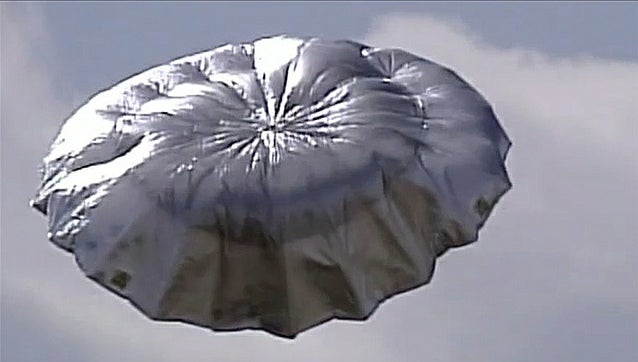The Physics of the Balloon Boy
Was it even possible for six-year-old Falcon Heene to have flown inside his balloon?

I guess some people will do anything to get on television. In the media blitz last week, nobody seemed to pause to wonder whether the escaped helium-filled contraption would in fact have sufficient buoyancy to carry a 40-pound boy to a height of 7000 feet. Let’s apply some physics to the case.

When talking buoyancy (which is a result of a difference in pressure between the top and bottom of a submerged object), it’s all about Archimedes’s Principle: The buoyant force acting on an object submerged in a fluid is equal to the weight of the fluid displaced by the object.
In the case of a helium balloon, the fluid being displaced is air, and the volume of displaced air is equal to the volume of the balloon. Therefore, the greater the volume of the balloon, the greater the buoyant force acting on it. Mathematically B = DVg, where D is the density of displaced air (1.3 kg/m3), V is the volume and g is the acceleration due to gravity (9.8 m/s2). In order to lift off of the ground, the upward buoyant force must be greater than the downward force of gravity acting on the contents of the balloon, including the helium, the balloon material, any attached components, and any small boys that publicity-obsessed parents may claim to be on board. According to Newton’s Second Law,
B - Mg = Ma
Mg is the weight of the balloon and contents and therefore B must be greater than Mg for the balloon to achieve an upward acceleration of a.
Without being able to perform direct measurements, we can make a rough estimate of the volume of the rig from the video. We’re going to approximate the shape to be that of an “oblate spheroid” with a volume V = 4/3πb2cwith b being the horizontal radius, and c the vertical radius of the balloon.
Estimating a = 2.2 meters, and b = 1.0 meters we get V ≈ 20 cubic meters.
resulting in a buoyant force of
B = (1.3 kg/m3 )(20 m3 )(9.8 m/s2 ) = 255 Newtons or 57 pounds.
Is it enough? Well, assuming a smallish six-year-old boy weighs about 40 pounds, and because the weight of helium (D = .18 kg/m3) in the balloon will be
W = Mg = DVg = (.18 kg/m3 ) (20 m3 )(9.8 m/s2)
= 35 Newtons (8 pounds) it appears that we’re right on the borderline. We’ve got 9 pounds left over.
Assuming our volume estimate is in the ballpark, the boy could have been lifted off the ground, if the balloon material and any attached components weighed less than about 9 pounds. Fortunately this was never actually put to the test.
Adam Weiner is the author of Don’t Try This at Home! The Physics of Hollywood Movies.